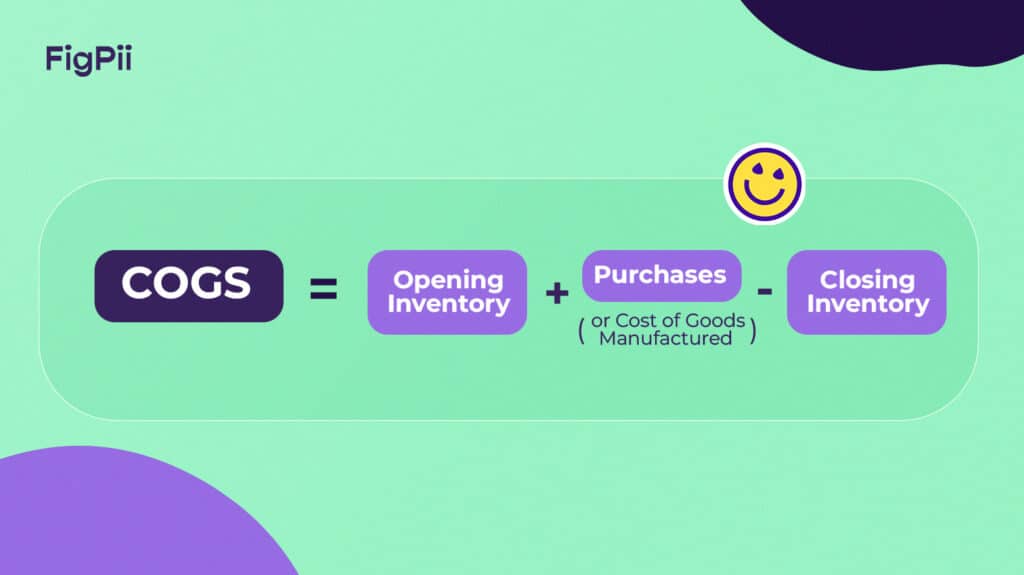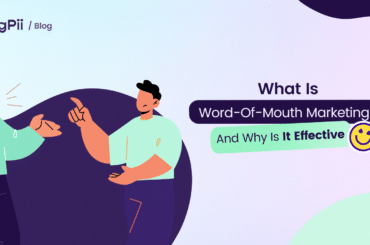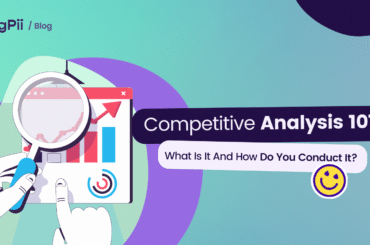COGS, short for Cost of Goods Sold, represents the direct expenses incurred in producing or procuring the products you sell. It includes raw materials, manufacturing expenses, packaging, and shipping costs.
As an ecommerce business owner, you might wonder, “Why should I pay attention to COGS?” Trust me; it’s not just a fancy term to impress your business buddies. Conducting a thorough COGS analysis can uncover insights and help you stay ahead in the competitive e-commerce landscape.
When you delve into COGS analysis, you gain a deep understanding of the cost patterns within your business.
This means you can identify the specific cost drivers that impact your bottom line. By pinpointing these drivers, you open doors to a world of opportunities for cost reduction and product pricing optimization.
Why is Cost Of Goods Sold Analysis Important for Ecommerce Businesses?
-
-
Understanding Profitability
Analysing COGS allows you to gain deep insights into the cost structure of your products.
When you examine the direct costs involved in producing or sourcing goods, you can determine the true profitability of each item you sell.
It’s like spotlighting your financial performance, enabling you to make informed decisions that can positively impact your bottom line. It’s about maximizing your revenue while carefully managing and controlling costs.
-
Optimizing Pricing Strategies
Pricing your products strategically can make all the difference in attracting customers, driving sales, and maximizing profits.
By delving into COGS analysis, you gain a comprehensive understanding of the cost components that contribute to the final price of your products.
This knowledge allows you to set prices that align with your desired profit margins while remaining competitive.
-
Identifying Cost-saving Opportunities
Finding ways to save costs can significantly impact your business’s value and success.
When you analyze your business’s COGS, you get a comprehensive understanding of the direct costs associated with producing or sourcing your goods.
You can pinpoint bottlenecks, redundancies, or waste in your supply chain by examining the cost breakdown of raw materials, production processes, and logistics.
-
Evaluating Product Performance
When it comes to running a successful e-commerce business, understanding the performance of your products is paramount.
COGS analysis helps in evaluating how well a product resonates with customers and contributes to the business’s overall success.
By examining the cost structure of each product, you can evaluate its value beyond sales figures.
Furthermore, COGS analysis helps evaluate cost-effective product variations or lines, informing decisions on which products to prioritize and develop.
-
Facilitating financial planning and forecasting
A thorough COGS analysis gives you a comprehensive understanding of the direct costs associated with your products.
This knowledge becomes the bedrock of your financial planning, allowing you to project expenses, anticipate profit margins, and strategically allocate resources.
Moreover, COGS analysis plays a critical role in evaluating the financial viability of new ventures.
By estimating the costs associated with product launches or market expansions, you can gauge potential profitability and make informed investment decisions.
-
How To Calculate Cost Of Goods Sold?
Calculating the Cost of Goods Sold (COGS) is essential for understanding the financial performance of your business.
While the specific method may vary depending on your business and accounting practices, here’s a general overview of how to calculate COGS:
-
Determine the Direct Costs
Identify the direct costs associated with producing or acquiring your products. These costs typically include raw materials, packaging materials, direct labor, and any other expenses directly tied to the production or procurement of your goods.
-
Exclude Indirect Costs
Exclude any indirect costs that are not directly related to the production of your products. These indirect costs may include administrative, marketing, rent, utilities, and other overhead expenses. They are not considered part of COGS.
-
Add Beginning Inventory
If you have inventory from the previous accounting period, add the value of the beginning inventory to account for the goods not sold in the previous period.
-
Subtract Ending Inventory
Determine the value of your ending inventory at the end of the current accounting period. Subtract this value from the sum of direct costs and beginning inventory.
The result represents the cost of goods sold during the accounting period.
The formula for calculating Cost of Goods Sold can be expressed as follows:
COGS = Opening Inventory + Purchases – Closing Inventory
COGS Costing Methods
When it comes to calculating the Cost of Goods Sold (COGS), there are several methods you can use.
The choice of method depends on your business’s specific circumstances and the accounting principles you follow. Here are four commonly used methods for calculating COGS
-
-
Specific Identification Method
The specific identification method involves tracking the cost of each item sold. This method is often used when dealing with unique or high-value items.
With this approach, you assign the actual cost of each item to the corresponding sale, resulting in a precise calculation of COGS.
However, this method requires meticulous record-keeping and is impractical for businesses with a large volume of inventory.
-
First-In, First-Out (FIFO) Method
The FIFO method assumes that the first items you purchased or produced are the first ones sold.
Under this method, you calculate COGS based on the cost of the oldest inventory in stock.
As new inventory is acquired, the cost of goods sold reflects the cost of the oldest items, while the ending inventory reflects the cost of the most recent purchases or production.
FIFO generally aligns with the natural inventory flow and is commonly used in businesses where the perishability of goods or obsolescence is a concern.
-
Weighted Average Cost Method
The weighted average cost method determines the average cost of all inventory items available for sale during a specific period.
This method divides the total cost of goods available for sale by the total number of units available for sale. The resulting average cost per unit is then multiplied by the units sold to calculate COGS.
The weighted average cost method is straightforward and provides a simplified approach to calculating COGS, especially for businesses with a large inventory turnover and frequent cost fluctuations.
-
Last-In, First-Out (LIFO) Method
The LIFO method assumes that the most recently purchased or produced items are sold first.
In this method, you calculate COGS based on the cost of the newest inventory in stock. As new inventory is acquired, the cost of goods sold reflects the cost of the most recent items, while the ending inventory reflects the cost of the oldest items.
The LIFO method may benefit businesses facing rising costs or inflationary pressures since it attributes higher costs to the goods sold, resulting in lower taxable income.
-
What Is Cost Behaviour Pattern?
In relation to COGS, cost behavior pattern refers to how the costs directly associated with producing goods or services change based on activity levels.
It helps businesses understand how COGS fluctuates as sales volume or production activity varies.
This understanding enables you to analyze and predict cost variations within COGS, facilitating effective cost management and informed decision-making.
Let’s look at the different categories of cost behavior patterns.
-
Fixed Costs
In the context of COGS, fixed costs are expenses that do not vary based on the quantity of goods produced or sold. These costs stay relatively stable over a certain period, irrespective of fluctuations in production volumes.
Examples of fixed costs in COGS may include rent for manufacturing facilities, salaries of permanent production staff, or annual insurance premiums.
Fixed costs are like the steady foundation of your COGS structure, providing stability regardless of changes in output.
Benefits
- Provide stability to the business regardless of sales or production fluctuations.
- Help determine the breakeven point and inform pricing strategies.
- Assist in calculating the minimum sales or production volume required to cover expenses.
-
Variable Costs
As the name suggests, variable costs fluctuate in direct proportion to the quantity of goods produced or sold. Variable costs change based on the level of production activities.
It represents the dynamic component of your COGS, reflecting the direct impact of production volume on expenses.
As production increases or decreases, the variable costs associated with producing or acquiring the goods will rise or fall accordingly.
Examples of variable costs in COGS include raw materials, direct labor costs, packaging materials, and shipping expenses.
Benefits
- Offer flexibility as they adjust based on production or sales activity.
- Allow for better pricing decisions, production planning, and inventory management.
- Enable businesses to optimize their cost structure and respond to market demands efficiently.
-
Semi-Variable Costs
Semi-variable costs, also known as mixed costs, exhibit fixed and variable cost characteristics.
They have a fixed portion that remains constant and a variable portion that changes with production or sales levels. Semi-variable costs may include utilities or maintenance expenses for production equipment.
The fixed portion may represent the basic costs to maintain operations, while the variable portion may vary depending on factors such as usage or hours of equipment operation.
Benefits
- Provide a deeper understanding of cost behavior by separating fixed and variable components.
- Allow for more accurate forecasting, cost control, and decision-making.
- Aid in optimizing operations and improving overall profitability.
-
Step Costs
Step costs remain fixed over a specific range of production or sales levels but increase abruptly when it reaches a specific threshold.
Step costs are incurred when a business needs to invest in additional production equipment or expand its facilities to accommodate higher production volumes.
These costs remain constant until the capacity limit is reached, after which additional investment is required to handle the increased output.
Step costs can impact COGS significantly when a business reaches certain production thresholds, requiring strategic planning to manage the associated cost increments.
Benefits
- Help businesses plan for growth and expansion.
- Provide insights into the thresholds at which additional costs are incurred.
- Support strategic management decisions for scaling up production or expanding sales.
- Enable evaluation of return on investment and optimal resource allocation.
Understanding Cost Behavior Patterns In Relation To COGS
Imagine a small manufacturing company that produces custom-made furniture. They have a workshop with a fixed rental cost of $2,000 per month, regardless of the number of pieces they produce. This represents a fixed cost as it remains constant regardless of production volume.
Additionally, the company incurs variable costs such as raw materials and direct labor. These costs fluctuate in direct proportion to the number of furniture pieces produced. For example, if they produce 10 furniture pieces, raw materials and direct labor costs will be higher than producing only 5 pieces.
Now, let’s consider the semi-variable cost behavior pattern. The company also hires a part-time furniture finisher who works for an hourly wage of $15 and receives a fixed monthly salary of $500. The monthly salary represents the fixed component, while the hourly wage is the variable component.
As production increases, the furniture finisher’s working hours and associated costs increase, making it a semi-variable cost.
Lastly, the company decides to invest in new equipment to increase production capacity. The equipment costs $10,000 and can produce up to 50 furniture pieces per month. However, if they want to produce more than 50 pieces, they need to purchase an additional machine.
This represents a step cost behavior pattern since costs are clearly increased when a specific production threshold is reached.
Understanding these different cost behavior patterns helps business owners make informed decisions. Considering these cost behavior patterns within your COGS analysis can help you optimize their cost structures, pricing strategies, and also:
Conclusion
COGS analysis is a game-changer for e-commerce businesses. Businesses can optimize their operations and make a profit by delving into cost patterns, identifying drivers, and uncovering opportunities.
The cost of goods sold (COGS) encompasses the direct expenses incurred in producing a product, encompassing material and labor costs. With a deep understanding of their cost structure, businesses can make informed decisions, streamline processes, and maximize their competitive edge.




